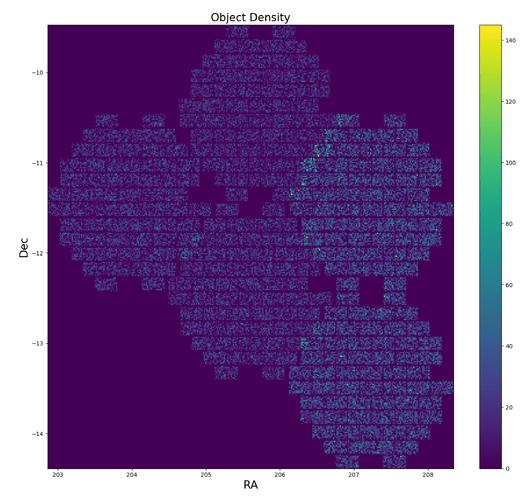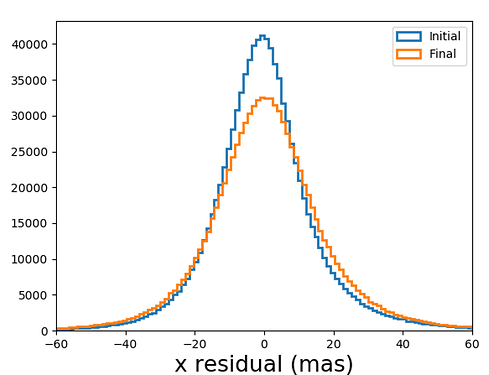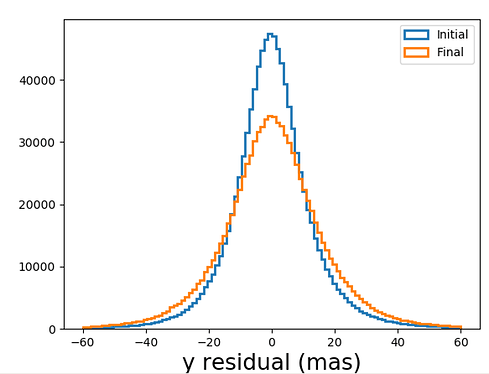I am running jointcal on a set of DECam images processed by the community pipeline in the VR filter using gaia dr2 for my reference catalog. I am testing on a single tract to see how the performance improves when using jointcal. The observing strategy is to take many exposures in the same position and then shift the pointing by almost the whole focal plane for another set of exposures. There are five different pointings with a total of ~70 exposures that overlap the tract I am testing. Here is a plot of the object density:
When I run jointcal on this data it seems to perform worse astrometrically than without jointcal. I used the chi2 initia/final files to compute residuals and here are x and y residuals for over the dataset.
Here is an example of the residuals of a single exposure with the original solution on the left and the jointcal results on the right:
You can clearly see how the residuals are worse after running jointcal.
My question is what are the best parameters I can fiddle with to get improved performance. I tried to change the fitting order and that didn’t improve the residuals. I’d appreciate any advice or recommendations.





